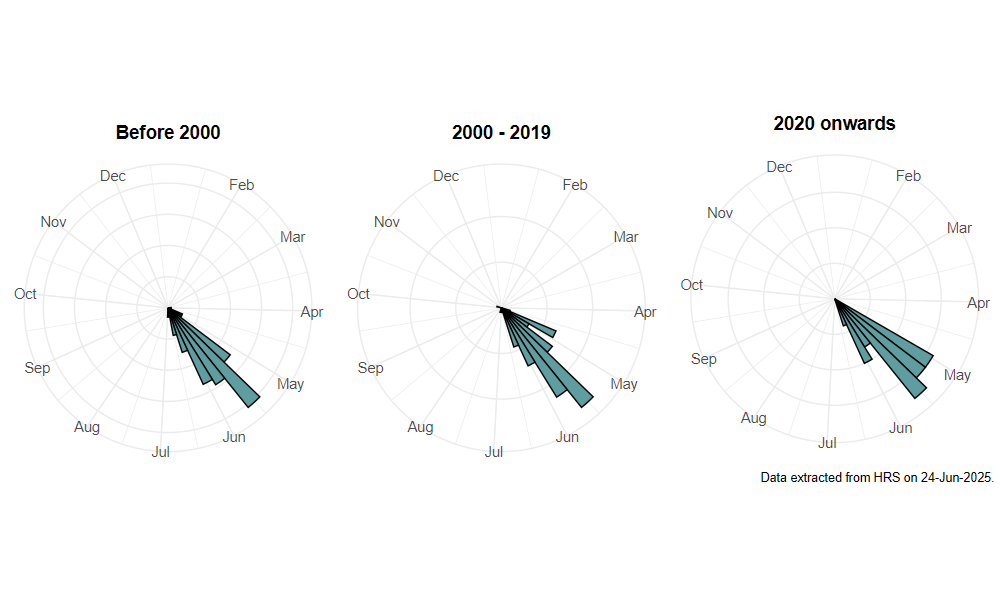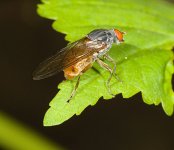Brachyopa insensilis Collin, 1939
Identification
Identification difficulty = 2. ![]()
![]() according to Ball & Morris, 20241
according to Ball & Morris, 20241
Synonymy
Prior to 1939 the only listed British species was B. bicolor. The additional species were not covered by a widely available key until Coe(1953)2. Consequently, records prior to 1953 must be based on verifiable specimens.
Biology
The larva occurs in sap runs or accumulations of sap under the bark of trees. Although traditionally associated with Elm Ulmus, it has been found on a wide range of deciduous tree species including Ash Fraxinus excelsior, Beech Fagus sylvatica, Lime Tilia sp., and particularly Horse Chestnut Aesculus hippocastaneum, often in urban and suburban situations. Adults are usually found sitting on tree trunks or on nearby vegetation. They can often be seen hovering in small groups immediately in front of a sap run. Stirring up a sap run (presumably releasing odours) can often result in the rapid arrival of adults.
Flight period
The following plots show the number of unique records per week excluding those reported to be of immature stages.

Status
Was listed as 'Notable' by Falk, 19913 but dropped from this status by Ball & Morris, 20144, so considered LOWER RISK.
Distribution
A very widely distributed species that is undoubtedly under-recorded. It is most likely to be found in urban areas where Horse Chestnut has been planted.

Trends
The following plots show the Frescalo TFactor vs year and a map of the rescaled frequency (all records) for the species.
-
Ball, S., & Morris, R. (2024). Hoverflies of Britain and Ireland. WILDGuides (3rd ed.). Oxford: Princeton University Press. ↩
-
Coe, R. (1953). Diptera: Syrphidae. Handbooks for the Identification of British Insects, 10(1), 1–98. ↩
-
Falk, S. (1991). A review of the scarce and threatened flies of Great Britain. ( No. 39). Research and Survey in Nature Conservation (pp. 1–194). Peterborough: NCC. ↩
-
Ball, S., & Morris, R. (2014). A review of the scarce and threatened flies of Great Britain. Part 6: Syrphidae. ( No. 9). Species status (pp. 1–130). Peterborough: JNCC. ↩
